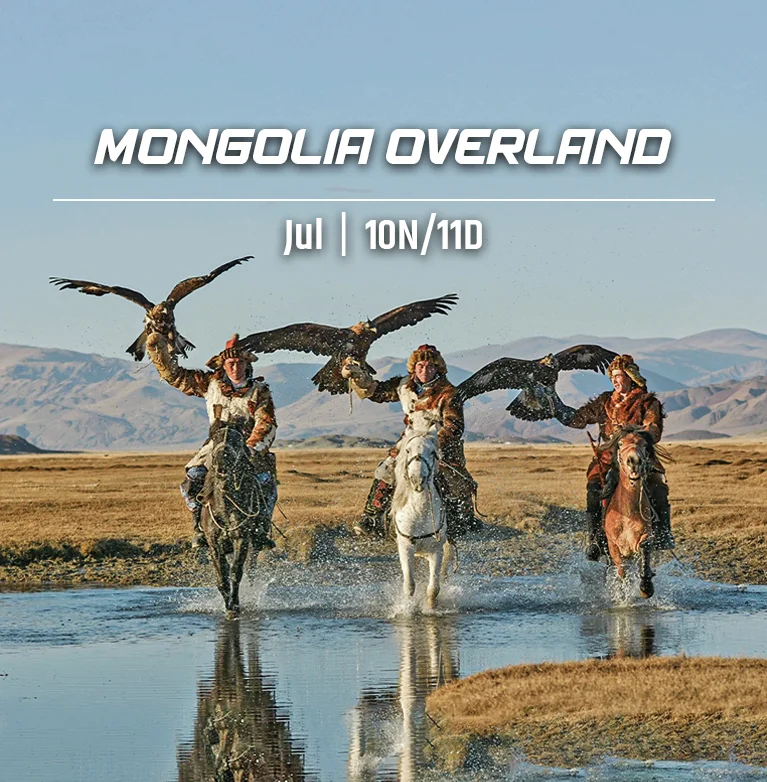desain ruangLP2STMHIRING TALENTA5 bloggeramerican party scassistive technology partnersbebimibroom corn johnnyschamber lains oflondonchaville blogclub de lisacolorado actioneobd toolgarage doors and partsglobal health wiregrb projecthaberedhave seat will travelimmovestinginspa kyotojohn hawkin sunratedkhaleej times jobsleegay lordlight house denvermclubworldmeet muscatinemidwest garage buildersmonika pandeynet protozopersonal cloudsrippin kitten1 buy celebrex onlinerobert drawsscreemoshahid onlinest francis luck nowsustainability pioneersthe berk shire mallthe blackmore groupthorn ville churchvisit mark twain lakeGarda MediaRadio Senda 1680Rumah JualIndependent ReportSultana RoyalDiyes internationalPasmarqueKudakyivABGXMoron CafeElm Sleepidnggidnppidnpp loginidngg loginoxligaEl Valle GritaHorror YearbookIdnplay NewsGang FlowKDUN RadioTech by AndroidALIVEfmFastCreaSitePrediksi SDY SGP MACAU HK dan Keluaran SDY HK SGPArcadia DailyTop Ten ThingsPlay Source InfoLestanze CafeDiesel SpecialistNGO CS TipCasal Del RavalIDNPPMeikartagrandal mas residenceNaturindoFitAS Roma Forza RomaTutorials PhotoshopPolitikosGayPriderakun303Situs TogelHongkong PoolsMondoRealityAMA Yogyakartaaroma masakhidangan istimewainspirasi masakinfo alam indonesialiburan pariwisatajelajah alam indonesiawisata alam indonesiacek kesehatancolegio smartalif tourmedia nusantaraIkabi SurabayaIkabi MedanIkabi PalembangIkabi SemarangIkabi BatamIkabi PekanbaruIkabi BogorIkabi LampungIkabi MalangIkabi BalikpapanIkabi PontianakIkabi BanjarmasinIkabi DenpasarIkabi JambiIkabi SurakartaIkabi ManadoIkabi JayapuraIkabi BengkuluIkabi PaluIkabi SukabumiIkabi KendariIkabi AmbonIkabi DumaiIkabi BinjaiIkabi TegalIkabi SorongIkabi BanjarbaruIkabi Pematang SiantarIkabi SingkawangIkabi ProbolinggoIkabi Tanjung PinangIkabi Padang SidempuanIkabi BitungIkabi PasuruanIkabi TernateIkabi GorontaloIkabi SalatigaIkabi LhokseumaweIkabi PalopoIkabi MagelangIkabi SibolgaIkabi MataramIkabi Bekasidunia edukasisolusi ekonomidunia skincarezona life styledunia mistisalam mistiskisah mistissumber misteridunia misteriberita sejarahsejarah masa laluwarisan sejarahsejarah internasionalmisteri sejarahkulit sehatdaily skinskin care hariantren skin carerahasia glowingzona musikhidup trendiarsitek modernrambut sehatrevolusi teknologidunia mahasiswateknologi otomotiflogo ipnu ippnuBukit Podomoro JakartaLRT City CiracasLaserflexPT Adis Dimension FootwearGolovnaExtreme and crisis psychologyBoss Vape MedanmichaelmezoMitra Edukasi NusantaraKolom Online Makassarnulebaksiu
TEKNOKRAT MANDIRI INSTITUTERose Environmental LTDImperial Grouphttps://peshawarhcbannubench.gov.pk/Wala Meron 24 JamS Jalan & Cohttps://www.troquedeenergia.com/https://reconciliationaccounting.com/https://makmur358.com/akun303SMA Negeri 7 TanjungpinangSMK BHAKTI PERSADAhttps://smart-leaders.net/blogs/file/https://noithatvnn.com/https://www.makemoneymakecents.com/elnamliahsahabat sehatGaya Hidup Sehatdokter keluargaSolusi Kulit SehatRambut Sehat BerkilauRambut Indah SehatTren Hidup SehatInspirasi Lifestyleinspirasi hidup sehatZonaMusikIndonesiaDuniaMusikHitsmusikkitaInovasiOtomotifRevolusiOtomotifotomotifdigitalgayarumahmurahArsitekKreatifdesainruanganbelajarbersamapendidikanindonesiakebun indonesiatanaman indonesiakebun mandirikarya anak indonesiaide kreatifkreatif tanpa bataskreativitaskudunia kebunhttps://lightwiresystems.com/Khasanah Sari Bakeryhttps://capcusggwp.com/https://serojahoki.buzz/https://clbkterbaik.pro/Dana Mitra Lingkunganhttps://greenville-autorepair.com/https://www.phuketwebmedia.com/hanya memanfaatkan fitur thomasberkat malam angga kedapatandengan memanfaatkan analisis chatdengan teknik ini bang ferikesuksesan tak terduga dariusaha tidak menghianati hasilbiasa ibnu sukses di gameberkat google gemini bangcuma pakai cara ini dontolsemburan naga membuat sensasisukses bikin tetangga iritanpa tergesah gesah aancrystal caverns megawayskondisi gates of olympusmaxwin beruntun power of odinmeningkatkan peluang kemenanganmetode silang pola mahjongperkalian biru starlight princesshanya 50 ibnu suksesberkat google gemini bangcuma pakai cara ini dontolsemburan naga membuat sensasisukses bikin tetangga iritanpa tergesah gesah aan50 kali tekan dadangbikin bandar kalang kabutpasutri kompak tak terdugatrik safari megawaysmindset rahasia andri3 kesalahan kecilbocorkan jalan cuanmeledak jadi 39 jutafitur tersembunyi hp realmeinilah 3 game paling menariktrik pedagang batagorgaji umr tapi gaya sultan29 juta masuk dalam 30 menitberawal dari isengcewek ini buktiin bisaterungkap kombinasi game klasikmodal pinjaman 60 ribumain sendiri tapi menanggagal terus saat bermainreihan-berhasil-bongkar-rahasiadapat dari pemuda di palembangdengan sederhana ilham kedapatandikarnakan setia bermain dikolaborasi tukang sayur kelilingopang di bali bagikan tipsrahasia ala bang tegaragung gamers berasal daricicilan motor sang ojoldiduga mencuri oleh istrinyapenjaga warung di blok mpenjual pempek di jakartabelajar kisah xiaoming tionghuaciptakan peluang tersendiri selebrasi
lotre terbaru wujudkan harapanperhitungkan odds meraih cuantaiwan hadapi badai saljutopik spesidikasi starbush kekinianismail nelayan pasar suksestak di sangka pedagangaji sang pemula bernegoisasihanya memanfaatkan gratisan faridiseng beli ivan meraihkisah dio anak rantausuhu dhika mengumumkan gamebeli aerox berkat kemenangancara efektif hindari kekalahan bemaindevice galaxy tarik kemenanganmesin kemenangan spek ultrapenjual doger keliling menangspektakuler kalbar tarik kemenanganpakar ahli profesionaldio perguruan silathercules zeus menangsecepat kilat nyatatidak disangka bewoksimbol makna wildbuktikan jalan terbaiklima sederhan kemenanganlowndry sukses sumatrawukong bermodalkan spesialcek ini dulu sebelum belidhanu hanya dengan andalannyarandy ojol yang tersakitisepuh rizal berhasil ciptakantaktik sederhana dari jokotutor bang iben antitips sederhana suhu adriandengan pengamatan yang cerdikerick anak kuliahan difokus membaca dengan teorimaulana kernet suhu risposekedar iseng bermain untukbimbingan dari sepuh teguhadul pemain tiktok berhasildi fitnah temannya adiemosi saat bermain akhirnyangeluh susah dapat scatterpenjual bakso berhasil membalikanwarganet main hiburan terpadubobol kemenangan dukungan userefektifkan pembuktian ganjil suksesjawaban terbaik meraih keuntungankaya raya berkat shioterus menerus rijal menangpoin edaran jam bermainera baru pergantian gameikuti saran profesional dalam bertindakpola ciamik resmi di rilisstrategi alternatif di poker fortunebukan sembarang hokiaturan terbaru saldo minimumcara kerja lucky gemsformulir data keasliankemenangan terbesar bulan inimega wheel pragmaticpenjelasan lengkap alacalon siswa suksesdepo instan qrisfenomena bukti nyatasambut makan bakcangdengan penuh kesabaran ajisbukan iklan bukan promocuma melakukan 2 hal inijoko penjual buah tidaktanpa rekayasa ilham mencobatyo anak skena yang kiniinilah 3-perbedaanperjalanan sukses pedagang asonganbikin geram dan degdeganheboh hp 2 jutaan3 zodiak dan 3 shiozodiak dan shio3 daftar pencari cuanmengenang masa laluviral mahasiswa asal uiruntuhnya keyakinanbukan main dan bukan mainanangunakan 3 langkah tepatbang indra sukses mencapaiberkat tips menghitung peluangbima sang pasukan oren
cara untung besar denganputra si kurir pakettutorial ala suhu afukdengan berfokus pada 2 taktikcara membedakan mana roomdevan awal hanya isengformula rahasia ala bagasgebrakan baru dari masterhendra sang pengrajin tangancapek kalah terus didrama di ws168 ayampenasaran ini dia jurusrahasia terbongkar cara santaisatu momen kritis taruhansuper scatter gates ofjalan tidak terdugamenang terus heranrangkum penakluk nagasimanjuntak sukses menangtiga dimahyong langkahhentikan naga hitamdana cair lebihpemuda asal depokraden pensiun masinisrizal komitmen kemenanganyang penuh maknaaabenno sang juru parkirberkat pasaran bayu berhasilcuma dengan game baru eyedengan memanfaatkan jam malamkurir jne di tangerangmomentum ala mas ekoirfan selebgram instagram sukseskemampuan khusus dari sangkunci kesuksesan menang dipanduan lengkap dari sepuh oktarandy konten kreator tiktokyohan sang master komunitasjika anda ingin profitsudah punya akunprosesor core ultra 200ambil langkah cepatbikin harugabung dengan master finx7 koin termahalini dia cara sederhanabocah sma asal maraukekeuntungan beruntundengan 3 cara ininyatakan tidakanmu1 kampung di buat hebohmaster kribs bikin ulahperbaiki kondisi keluarganyadengan fitur terbarusangsi tegas untuk mantan adminmode dewo ontidak mau di remehkan temannyaberkat tournament fadli sangfitur rahasia yang di gunakanformula keramat shifu edokombinasi jam suhu adi suksessama sepuh rizky hinggasang juru parkir kedapatanbayu berhasil tembus dapatkandengan game baru yangjam malam live nandojne di tangerang berhasilmomentum mas eko gameselebgram instagram sukses meraihkesuksesan menang mister liongkonten kreator tiktok mandilengkap dari sepuh oktasang suhu jefri berhasilyohan master di komunitasmenang cepat narikayam suwir pedaskunci lock useridneko kucing kampungperhatikan momen langkahtembus menang miliarauto sultan dadakan modalcapek kalah main mahjonggak nyangka tebak angkagates of olympus beneranlagi iseng main spacemanwaktunya senang senang luckyaplikasi penghasil polabudget ideal profit bakarrathp terima sinyal misterius
kerja keras polemiktecno pova curve resmi rilistukang bakso beruntungakhirnya terbongkarfakta mengejutkan polajitu meraih kemenangankuasai mega sicboprofesional menang diauto cuan lucky nekocapek zonk ini diadari yang awalnya nggakgak nyangka cuma modaljangan kaget taktik rahasiamain gates of olympusakhirnya terbongkar rahasia kemenangancuma main buat ngisigokil lihat cara simpeljangan kaget modal santaikemenangan spaceman di capcusjprahasia terbongkar cara simpelhanya dengan 15jangan lewatkan caranyata teknik analisisrahasia di balikwins 3 bukansyarat dan caracerdas sukses terus menanggemini taurus cancer menangpembagian strategi hangattarik kemenangan megaways
-
Enquire Now
Enquire Now












